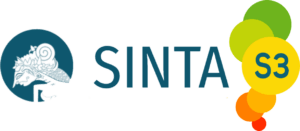“Ratib and Zikir” in Traditional and Modern Dayahs: A Living Qur'an Study in the Southwestern Region of Aceh
Abstract
This study explores the implementation and significance of “living Qur'an” practices in traditional and modern dayahs in the Southwestern region of Aceh, aiming to identify these practices, understand their implementation, and investigate the reasons behind their persistence. The research employs a qualitative approach, utilizing case studies and ethnographic observations. The study showed that “living Qur'an” practices, such as Ratib al-Haddad, Ratib al-Attas, Ratib Syahir, and Ratib Lathif in traditional dayahs, and Al-Ma’surat in modern dayahs, are deeply embedded in the dayah culture. These practices are systematically managed and carried out according to set schedules, with reasons including seeking Allah's pleasure, gaining rewards, and preserving scholarly traditions. Both traditional and modern dayahs in the southwestern region of Aceh effectively integrate “living Qur'an” practices into their daily routines, contributing to the spiritual and moral development of their students. These practices, while varied, reflect a commitment to maintaining a strong Islamic identity and adapting to contemporary educational needs.
Keywords
Full Text:
PDFReferences
Ahimsa, H. S. (2012). The Living Al-Qur’an: Beberapa Perspektif Antropologi. Walisongo, 20(1), 235–260.
Aini, F. A. (2021). Pengantar Kajian living Quran. Pustaka Djati.
Assegaf, M. A. (2008). Pancaran Hikmah Dzikir Dan Doa Rotib Al-Haddad. Abna Seiwun.
Athiq bin Ghaits Al Balady. (1993). Keutamaan-Keutamaan Al Qur’an menurut Hadits-Hadits Rasulullah SAW,. Toha Putra Semarang.
Basid, A., Romziana, L., & Sholeha, I. (2021). Konstruksi Budaya Akikah Dan Sêlapan: Studi Living Qur’an Di Kabupaten Probolinggo. Jurnal Islam Nusantara, 5(2), 67. https://doi.org/10.33852/jurnalnu.v5i2.309
Fakhrurrazi, F. (2017). Dinamika Pendidikan Dayah Antara Tradisional dan Modern. At Tafkir, X(2), 100–111.
Husna, R. (2021). Program Majelisan dalam Meningkatkan Kualitas Hafalan (Studi Living Qur’an di Pusat Pendidikan Ilmu Al-Qur’an Pondok Pesantren Nurul Jadid Paiton Probolinggo). Hamalatul Qur’an : Jurnal Ilmu Ilmu Alqur’an, 2(2), 35–45. https://doi.org/10.37985/hq.v2i2.19
Junaedi, D. (2015). Living Qur’an: Sebuah Pendekatan Baru dalam Kajian Al-Qur’an (Studi Kasus di Pondok Pesantren As-Siroj Al-Hasan Desa Kalimukti Kec. Pabedilan Kab. Cirebon). Journal of Qur’an and Hadith Studies, 4(2), 169–190.
Munawwir, A. W. (1997). Kamus Al-Munawwir, Arab-Indonesia Terlengkap (14th ed.). Pustaka Progressif.
Rafiq, A. (2021). Living Qur’an: Its Texts and Practices in the Functions of the Scripture Living Quran: Teks Dan Praktik Dalam Fungsi Kitab Suci. Jurnal Studi Ilmu-Ilmu al-Qur’an Dan Hadis, 22(2), 2548–4737. https://doi.org/10.14421/qh.2021.2202-10
Subakat, R. (2017). Peranan Dayah dan Meunasah di Aceh dalam Membentuk Masyarakat Religius. AsSalam, 1(3), 68–79.
Syamsuddin, S. (2007). Metodologi Penelitian Living Qur’an dan Hadis. TH Press.
Yunus, M. (2023). Internalisasi Nilai-Nilai Living Quran Di Pondok Pesantren Roudhotul Quran Tlogo Anyar Lamongan. Jurnal Ilmiah Research Student (JIRS), 1(1), 146–153.
DOI: http://dx.doi.org/10.22373/tafse.v9i1.22577
Refbacks
- There are currently no refbacks.
Copyright (c) 2024 Tabsyir Masykar

This work is licensed under a Creative Commons Attribution-NonCommercial 4.0 International License.
INDEX BY:
Journal Secretariat:
Al-Qur'an and Tafsir Department, 1st Floor, Faculty of Ushuluddin and Philosophy, Universitas Islam Negeri Ar-Raniry Banda Aceh Indonesia. Jln. Syeikh Abdul Rauf, Kopelma Darussalam Banda Aceh, Indonesia. Post Code: 23111.
Email: [email protected]
TAFSE: Journal of Qur’anic Studies, e-ISSN: 2775-5339, p-ISSN: 2620-4185



.png)

.png)

.png)
.png)
.png)









.png)

.png)
.png)
.png)
.png)
.png)
.png)